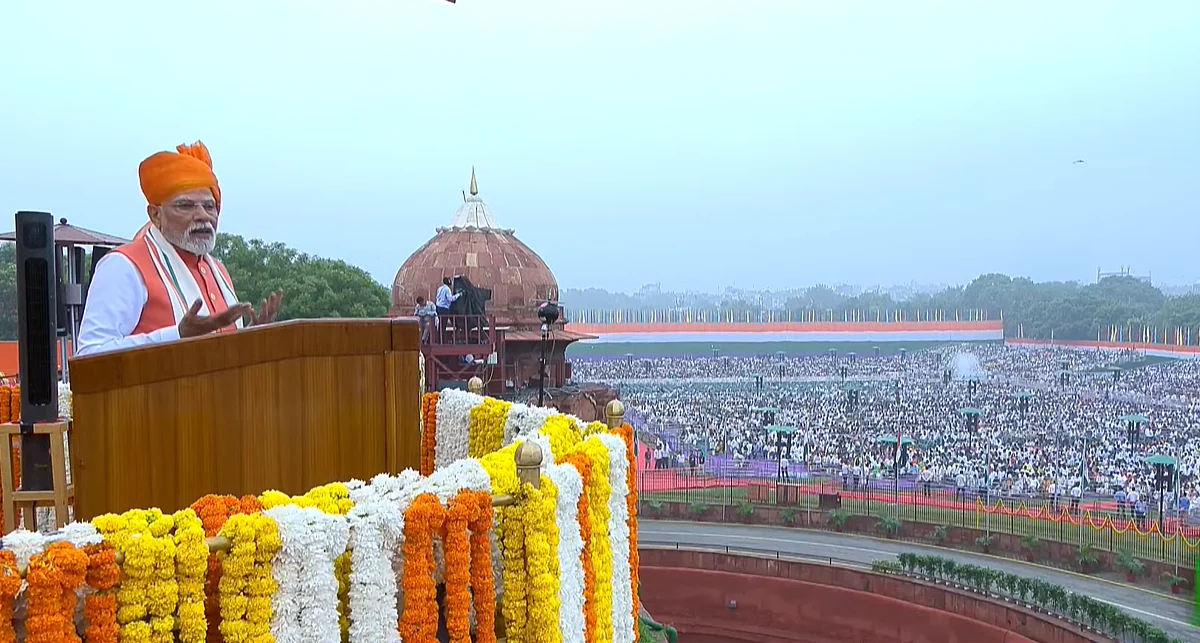GST Reforms: Two-Slab Structure, Automated Returns Part Of Finance Ministry's Mega Plan
The ministry described the new GST roadmap as a "three-pillar blueprint" aimed at making the system more transparent, stable, and citizen-friendly.

Prime Minister Narendra Modi, in his address to the nation on the occasion of India's 79th Independence Day, announced a major revamp of the Goods and Services Tax (GST) regime.
Calling GST one of the most transformative reforms since its implementation in 2017, the PM emphasised the need for next-generation changes that would bring tangible relief to the common man, farmers, middle class, and MSMEs. The reforms, he said, are central to building an 'Atmanirbhar Bharat' and will be designed to simplify the tax system while boosting economic efficiency.
Following the Prime Minister's announcement, the Finance Ministry released a detailed outline of the proposed reforms through a post on X (formerly Twitter). The ministry described the new GST roadmap as a "three-pillar blueprint" aimed at making the system more transparent, stable, and citizen-friendly. The reforms will focus on structural corrections, rate rationalisation, and improving ease of compliance for taxpayers.

PM Modi making his 12th Independence day adress from the Red Fort in Delhi. (Image: PMO)
Sudhir Kapadia, senior advisor at EY told NDTV Profit, GST reforms are a much needed measure and the charge coming directly from the Prime Ministers gives a clear signal that there is not only an intent but a set timeline before Diwali. "It is about time that these reforms are undertaken", he said.
One of the key structural changes proposed by the government is the correction of the inverted duty structure, which has long been a concern for manufacturers and exporters. This move is expected to enhance domestic value addition and reduce dependency on imports. Additionally, the government plans to resolve classification dispute under GST, which have led to confusion and litigation across sectors.
Kapadia said inverted duty structure ails many sectors in the economy. "Whether it's goods or services, there is mismatch between a higher input tax rate and a lower output tax rate. It should be a simple alignment of input and output tax rates as is done in most mature economies," he said.
The second major focus area is rate rationalisation. The Centre is proposing a shift towards a simplified two-slab GST structure, which would streamline the current multi-rate system. This change is aimed at reducing the tax burden on essential and aspirational goods, making them more affordable for consumers while maintaining revenue neutrality.
To improve ease of living and compliance, the government is introducing measures such as automated refunds and pre-filled GST returns.
These steps are expected to significantly reduce the compliance burden, especially for small businesses and MSMEs, which often struggle with complex filing procedures.
The reform plans have been sent to a Group of Ministers and will be discussed in the upcoming GST Council meeting.
“Moving to a two rate GST structure will put India at par with advanced economies which have a low rate for essentials and another rate for everything else. Classification issues and and disputes will significantly reduce if we get a two rate structure," said MS Mani, partner at Deloitte India.
“The reduction in GST rates will contribute to price reductions, which will lead to increased consumption, however the absence of Anti Profiteering provisions now would make it incumbent for businesses to self regulate and pass on the reductions to the consumers," he added.

